Update 03.28.2018 -- Run 9 Embedding: Pi0 Triggers
To make sure that the Run 9 dijet embedding sample accurately describes our data, I've compared various trigger, track, and tower distributions for pi0 triggers in both data and embedding. The trigger pi0 is identified identically in both data and embedding, and its definition can be found at the end of this post:
https://drupal.star.bnl.gov/STAR/blog/dmawxc/update-01152018-run-9-embedding-charged-hadron-triggers
Where I was comparing charged hadron triggers (in embedding) to pi0 triggers (in data). Using the above definition of the pi0 trigger and the attached bad tower list, the number of triggers in data and embedding are:
| Partonic pT [GeV/c] | No. of triggers |
| (5, 7) | 0 |
| (7, 9) | 1 |
| (9, 11) | 12 |
| (11, 15) | 9 |
| (15, 25) | 28 |
| (25, 35) | 226 |
| > 35 | 481 |
| total | 757 |
| data | 22030 |
Which, on the embedding side, is extremely disappointing. When finding the triggers in the embedding, there were numerous jobs that failed in the pTparton = (15, 25) and (25, 35) GeV/c bins. However, I suspect that even with all the jobs finished we'll still be looking at ~1000 pi0 triggers. The above numbers are for the RFF configuration of the sample only, so adding the FF configuration will probably yield ~2000 pi0 triggers in total...
That being said, below are comparisons between data and embedding. Statistical fluctuations in the embedding are quite large, so take some of these comparisons with a grain of salt. Here "recoil" indicates a track or tower with delta-phi = pi +- pi/2 wrt. the trigger.
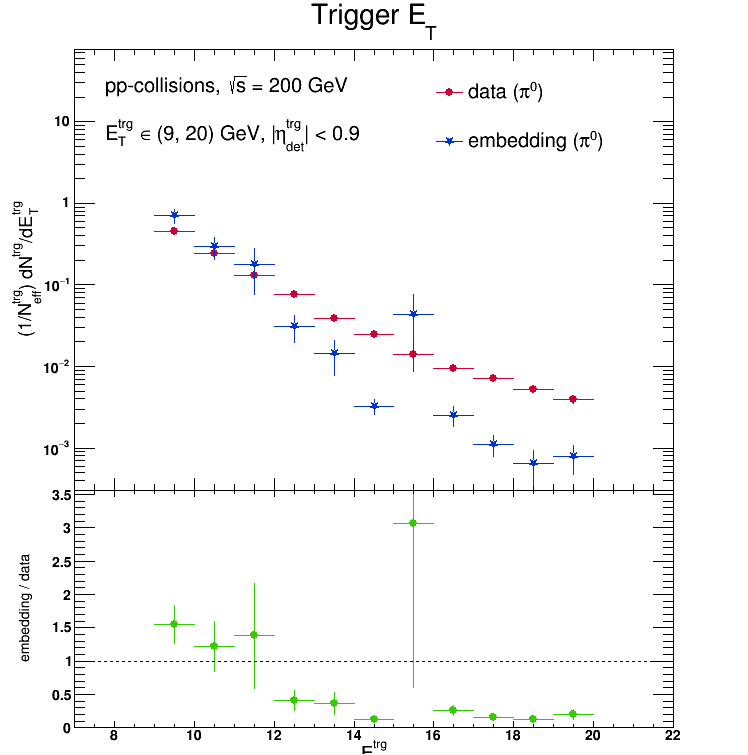
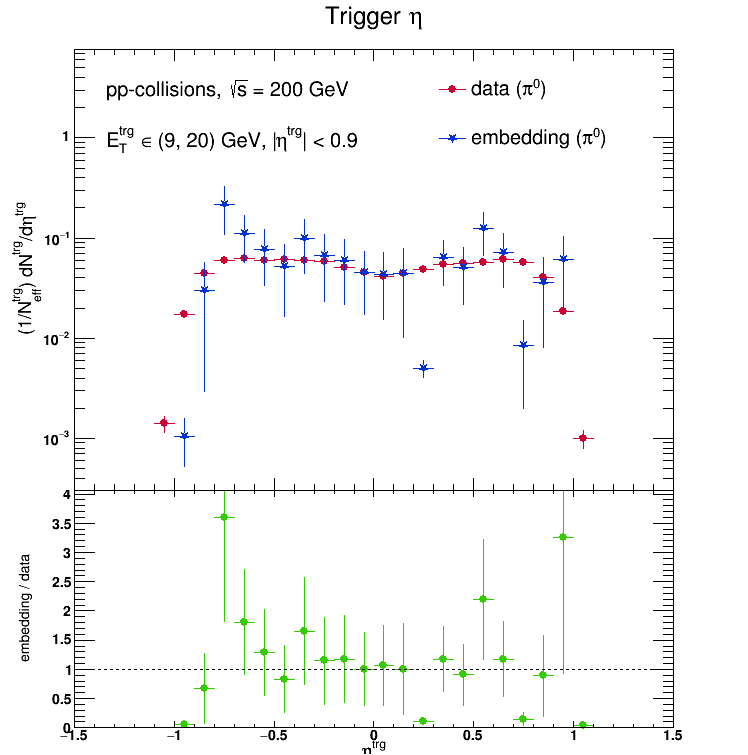




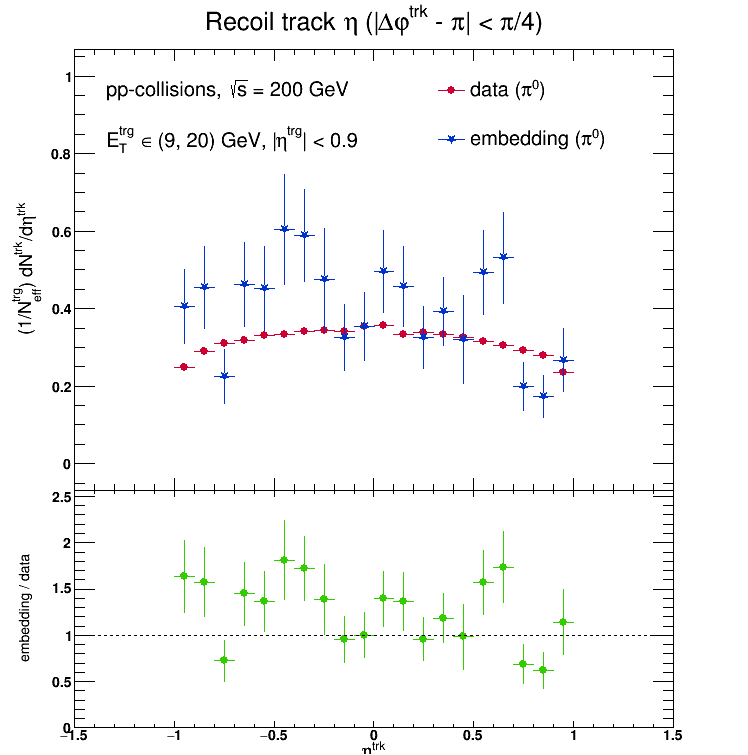
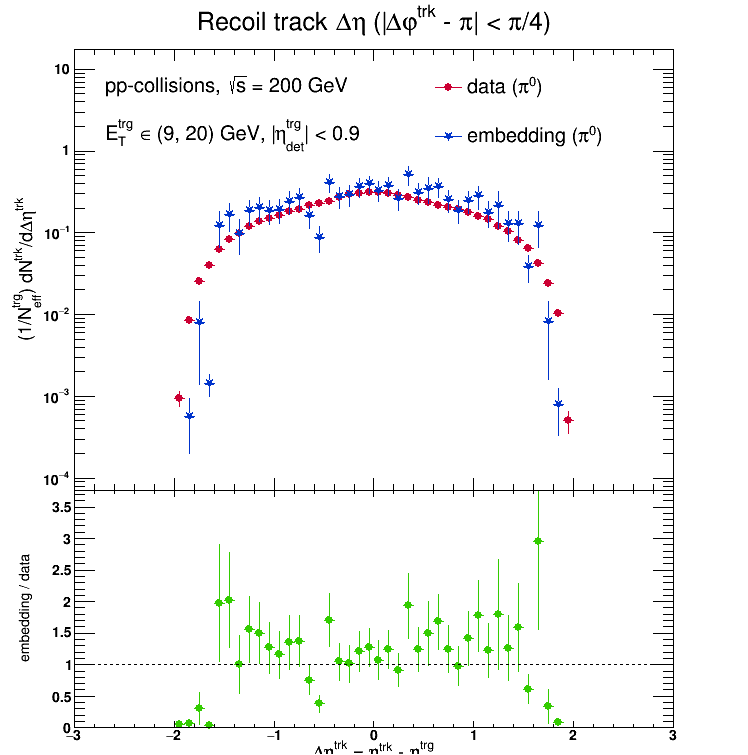
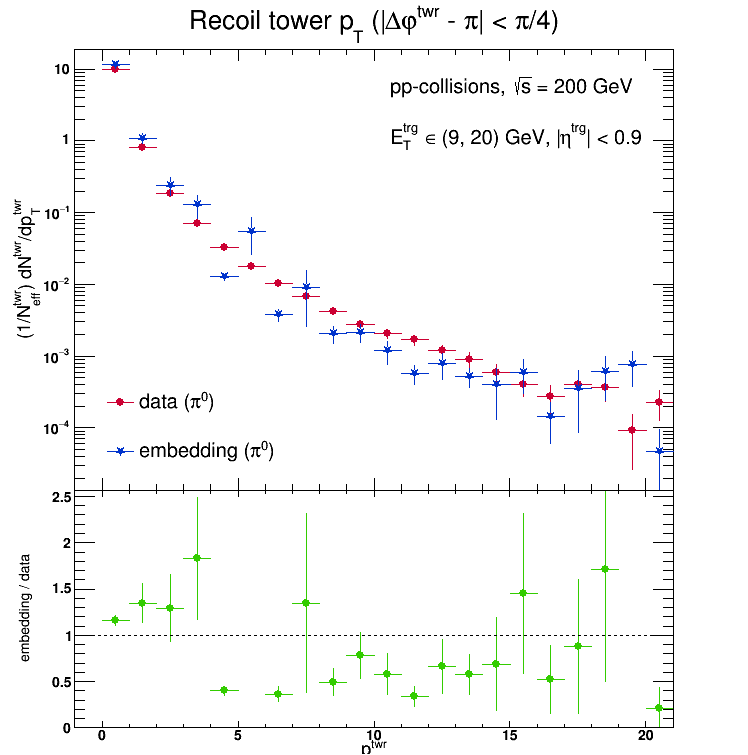
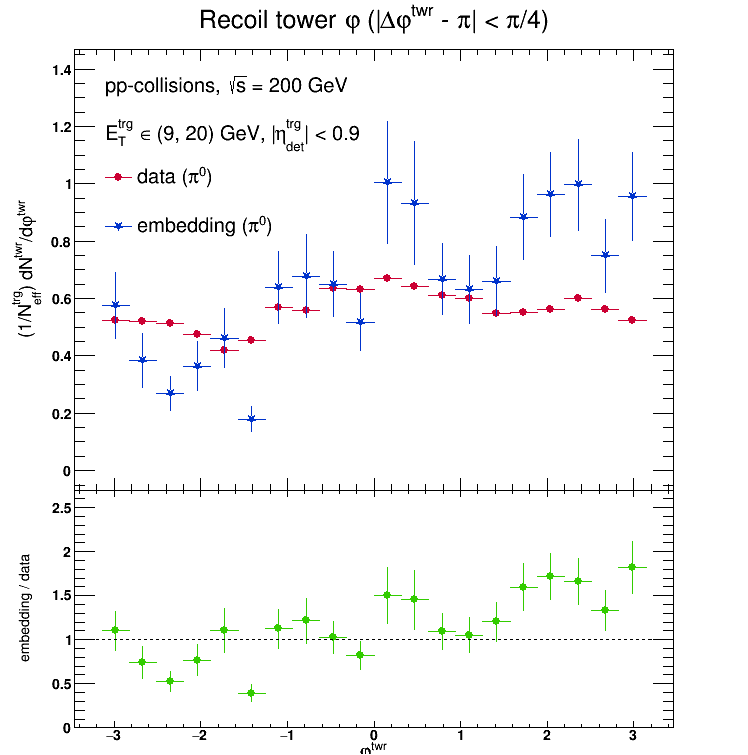

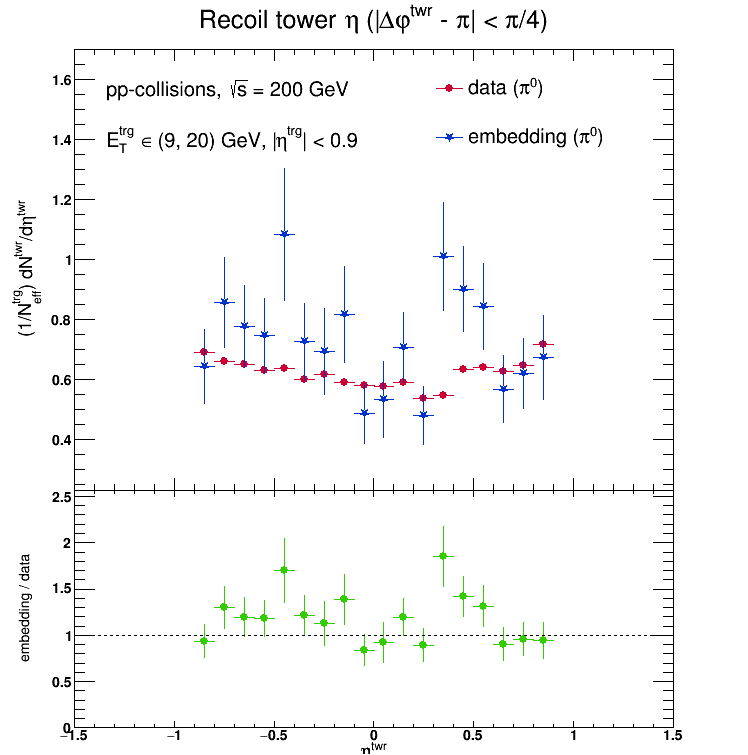
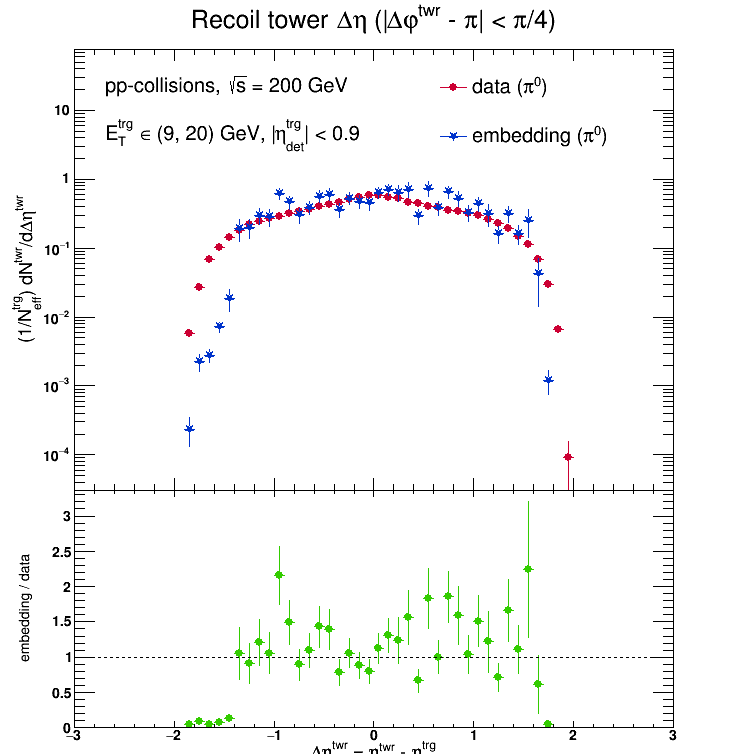
More comparisons of distributions that are independent of trigger (such as tower E/p) can be found in these posts:
https://drupal.star.bnl.gov/STAR/blog/dmawxc/update-01162018-run-9-embedding-z-vtx-dedx-and-tracktower-eta-phi-comparisons
https://drupal.star.bnl.gov/STAR/blog/dmawxc/update-01172018-run-9-embedding-bemc-tower-ep
- dmawxc's blog
- Login or register to post comments
